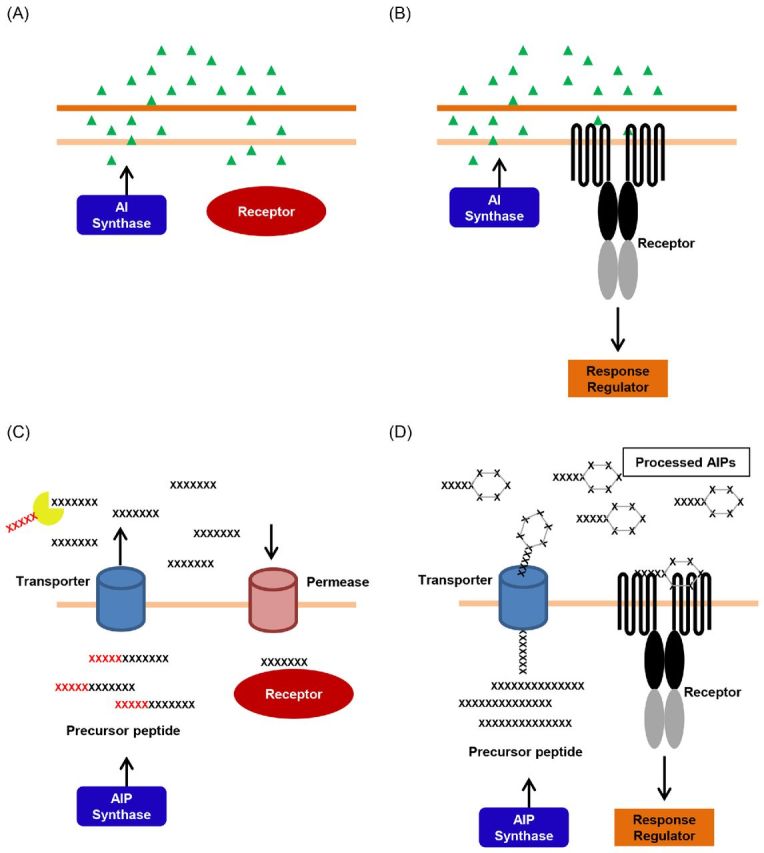Figure 1.

Basic QS circuit diagrams. (A) A Gram-negative one-component QS system. Autoinducer molecules are produced by the AI synthase, released into the extracellular environment, which are then diffused back into the cytoplasm where the QS receptor detects them, while also acting as a transcriptional regulator. (B) A Gram-negative two-component QS system. Autoinducer molecules are produced by the AI synthase, released into the extracellular environment, and are then detected by a transmembrane receptor. Detection of autoinducers triggers a phospho-relay that controls the downstream QS response. (C) A Gram-positive one-component QS system. Autoinducer peptides are produced by the AIP synthase and then released into the extracellular environment through a transporter, where they undergo proteolysis and are then transported back into the cytoplasm through a permease. In the cytoplasm, the modified AIP is detected by a QS receptor that also acts as a transcriptional regulator. (D) A Gram-positive two-component QS system. Autoinducer peptides are produced by the AIP synthase and released into the extracellular environment through a transporter where they undergo post-translational modifications and are then detected by a transmembrane receptor. Detection of autoinducer triggers a phospho-relay that controls the downstream QS response.
